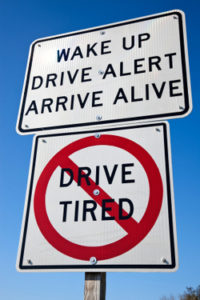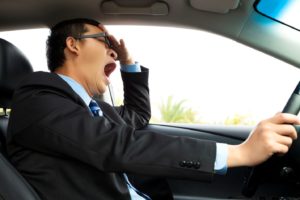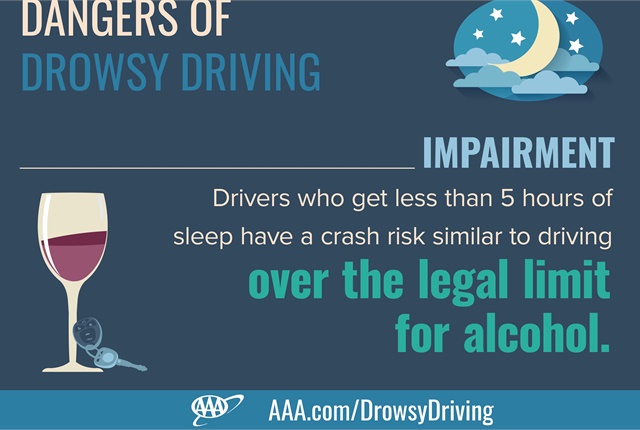Drive Alert

Don’t drive tired – road sign seen on the highway
Drive alert and stay unhurt
Those are the watchwords from the Centers for Disease Control and Prevention, and echoed by the National Highway Traffic Safety Administration (NHTSA). With the traveling season upon, thousands of vacationers are expected to hit the road to destinations that may involve late night driving.
Drowsiness a major crash cause
The NHTSA conservatively estimates that 100,000 police-reported crashes are the direct result of driver fatigue each year. This results in an estimated 1,550 deaths, 71,000 injuries, and $12.5 billion in monetary losses. These figures may be just the tip of the iceberg, since currently it is difficult to connect crashes to sleepiness. There is no test like a “Breathalyzer†for intoxication.
What happens behind the wheel?
Falling asleep at the wheel is clearly dangerous. But being sleepy affects our ability to drive safely even if we don’t fall asleep. Drowsiness causes us to lose our attention to the road, slows our reaction time to brake or steer suddenly, and affects our ability to make good decisions.
Warning signs of drowsy driving
- Yawning, blinking or nodding frequently
- Trouble recalling the past few miles driven
- Missing your exit
- Drifting from your lane
- Hitting a rumble strip on the side of the road
 Common sense prevention
Common sense prevention
If you notice the warning signs of drowsy driving, there are two common sense rules recommended by the safety experts – pull over to a safe place and take a 15-20 minute nap or change drivers. They point out that turning up the radio, having a cup of coffee, opening car windows (all of which many of us do) are not the solutions for safe driving when we are drowsy.
Remember, Drive Alert!
